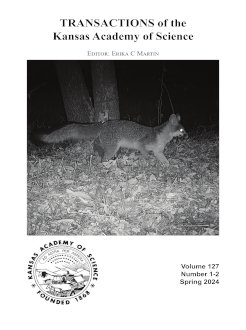In Kansas, crappie Pomoxis spp. (White Crappie P. annularis, Black Crappie P. nigromaculatus) fisheries have important social and economic value, making management of these species a high priority. However, management of crappie fisheries is often challenging due to a paucity of information regarding the specific dynamics regulating populations. Even when population dynamics information is available, the relative influence of exogenous factors on crappie populations is poorly understood. To improve the management of crappie fisheries, we sought to: 1) describe White Crappie population dynamic rates throughout Kansas and 2) assess the influence of exogenous factors (i.e. system characteristics and biotic interactions) on the dynamics of White Crappie populations. Annual survey data and associated age data were used to estimate relative abundance, recruitment, individual growth rates, and total annual mortality rates of each White Crappie population. The relationships between system characteristics, fish abundance variables, and White Crappie population dynamics were assessed using principal component analysis and multiple linear regression. In total, 19,874 White Crappie were sampled from 32 impoundments and age was estimated for 3,851 individuals. In general, White Crappie population dynamics were related to a variety of abiotic and biotic characteristics that largely reflected the influence of density-dependent processes. Surface area served as a surrogate for many of the covariates considered and may be useful in guiding management of White Crappie populations. Specifically, large impoundments with high predator abundance will likely support robust crappie fisheries due to density-related improvements in growth. Conversely, impoundments with small surface areas tended to have high densities of crappies and other centrarchid competitors, which resulted in slow growth rates and potentially poor-quality crappie fisheries. Overall, our results highlight the value of dynamics rate functions for understanding the mechanisms underlying White Crappie populations which can be used to improve management of the species.
How to translate text using browser tools
11 June 2024
The Influence of System Characteristics and Biotic Interactions on White Crappie Population Dynamics in Kansas Impoundments
James R. Miazga,
Zachary B. Klein,
Jeff D. Koch,
Ben C. Neely
ACCESS THE FULL ARTICLE
competition
fisheries management
predation
sport fisheries
surface area





